Heavy duty wheel
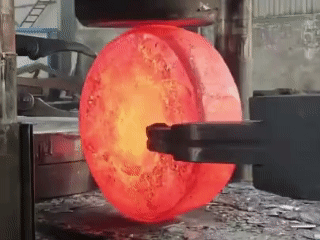
Material: Cast steel wheel(ZG430-640 or 55# stee), Rolled steel wheel: (60#, 65Mn, 42CrMo)
Customized size: diameter Φ300mm~2000mm
Processing: quenching and tempering as a whole
Customization: Available
We provide: Single-side wheel, double-side wheel, horizontal wheel, rimless wheel, back roller wheel, drive shaft, bearing housing, bearings, wheels, sleeves, covers, keys, etc.
WHAT IS STACKER-RECLAIMER WHEEL?
The stacker-reclaimer wheel is a key load-bearing component of bulk cargo handling equipment in ports. It is usually made of 35CrMnSi steel forgings and must meet the technical requirements of the JB/T 4149-2010 standard for a 15mm hardened layer depth. The stacker-reclaimer wheel is the core component of its traveling mechanism, responsible for supporting the weight of the entire machine and enabling the equipment to move on the track.
MANUFACTURING PROCESS OF THE HEAVY DUTY WHEEL FOR STACKER RECLAIMER
The materials of the stacker-reclaimer wheel usually include carbon steel, alloy steel and stainless steel. The manufacturing process is diverse, including free forging, die forging, ring forging and rolling ring, etc., and the deformation temperature is hot forging. The wheel forgings need to be tempered and quenched to ensure their quality and durability.
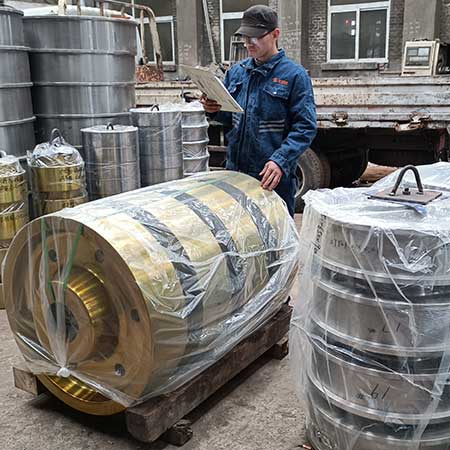
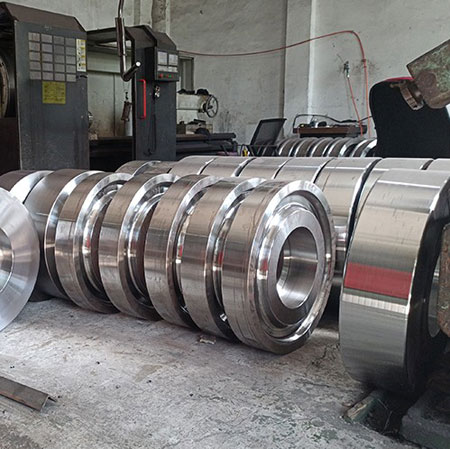
Applications of stacker relaimer wheels
Single-side wheel sets are mainly used in running mechanisms of gantry cranes below 5 tons, and trolley mechanisms of double-girder gantry cranes.
Double-side wheel sets are mainly used in gantry cranes, bridge crane main carriages, casting crane trolleys, electric flat cars, transfer trolleys, ship unloaders, shipyards, port machinery, coal unloaders, stacker reclaimers, quay cranes, etc.
Why choose AGICO CEMENT?
Our clients span across more than 30 provinces and autonomous regions in China and over 70 countries worldwide. From raw material to finished product, the company maintains strict quality control to ensure that every forging meets standards.
We have our own professional and experienced team for customs declaration and inspection. Each step—from order handling, review, material preparation, forging, machining, packing to transportation—is handled by dedicated personnel.
We have a responsive customer service team available 24/7 via phone, Whatsapp, facebook, email and other method to support you at any time.
We are committed to delivering high-quality, efficient service to every customer and welcome feedback and guidance from all sectors.
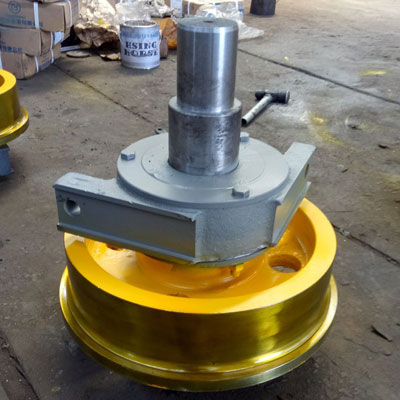
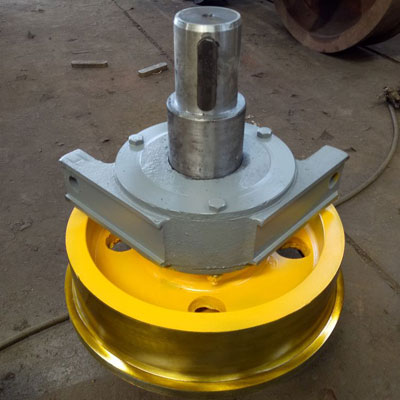
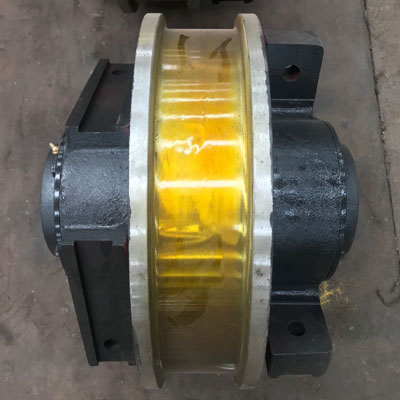
THE SERVICE LIFE OF HEAVY DUTY WHEELS FOR STACKER RECLAIMER
The service life of heavy duty wheels for stacker reclaimer is affected by many factors and usually fluctuates between 3 and 10 years. The specific service life needs to be comprehensively evaluated based on working conditions, maintenance level and design parameters. The following are key influencing factors and measures to extend the life:
| Factors | Influence description | Typical life range |
| Wheel pressure load | Overload or uneven wheel pressure distribution will accelerate fatigue wear (such as single wheel load exceeds the standard) | High load can be shortened to 2~3 years |
| Track condition | Unstraight track, joint misalignment or settlement will lead to rail gnawing and eccentric wear | Poor track reduces life by 30%~50% |
| Material and hardness | High-quality alloy steel (such as ZG50SiMn) + surface quenching (HRC≥45) has a life of more than 50% longer than ordinary materials | High-end materials can reach 8~10 years |
| Operation frequency | Continuous operation (such as 24-hour operation in ports) wears faster than intermittent operation | High-frequency use is shortened to 3~5 years |
| Environmental conditions | Dust, moisture or corrosive gases (such as coastal salt spray) accelerate rust and surface peeling | Harsh environment reduces life by 20%~40% |
Scrap Standard of the heavy duty wheel
- Wheel rim wear: Remaining height <15mm (new wheel rim is usually 25~30mm).
- Tread wear: Thickness reduction of 10% or grooves or peeling with a depth of >5mm.
- Crack defects: Visible cracks appear on the wheel hub, spokes or tread (need to be confirmed by magnetic particle inspection).
- Deformation: Wheel radial runout >1mm or axial runout >2mm.
Maintenance of the heavy duty wheel for stacker reclaimer
Daily inspection and maintenance
Track and foreign body cleaning
- Check the track for deformation and wear every day, and remove foreign objects such as stones and metal debris on the track in time to prevent the wheel from being blocked or abnormally worn.
- Check whether the track connection bolts are loose to avoid shaking during equipment operation.
Wheel status inspection
- Wear inspection : Observe whether the wheel rolling surface has uneven wear, peeling or cracks. Replace it if it is severely worn.
- Hub lubrication : Check the lubrication of the hub-type walking mechanism to ensure sufficient grease (mainly lithium-based grease).
- Tire pressure : The tire-type walking mechanism needs to check the air pressure regularly to avoid deformation or additional wear caused by insufficient air pressure.
Drive component inspection
Check whether the connection bolts of the walking motor and reducer are loose, and whether there are abnormal sounds, abnormal heat or vibration during operation.
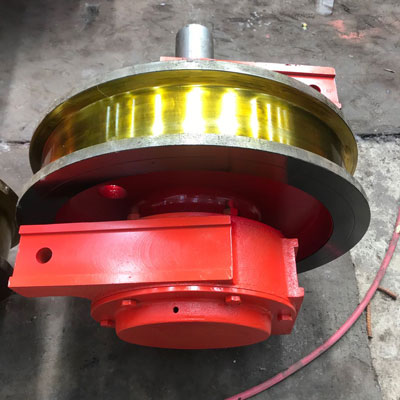

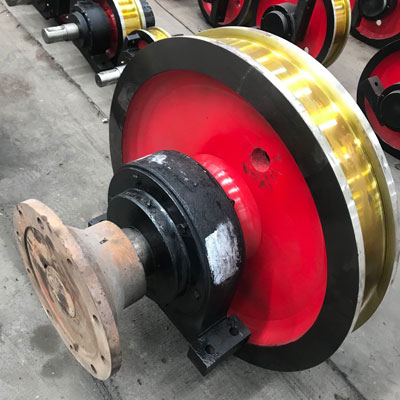
Wear and fault handling
Wear replacement standard
When the wheel rolling surface has deep peeling, cracks or wear that affects the walking stability, it needs to be replaced immediately.
If the surface of the polyurethane drive wheel is cracked or aged (especially in low temperature or chemical corrosion environment), it should be replaced with a more weather-resistant wheel body in time.
Bearing maintenance
Bearing failure is a common problem. The lubrication status needs to be checked regularly. When replacing damaged bearings, sealed design models are preferred to prevent dust/water intrusion.
When the bearing makes abnormal noise or overheats, stop the machine for inspection immediately to avoid collateral damage.
Overload and operating specifications
Strictly operate according to the rated load to avoid sudden start and stop causing wheel impact damage.
When the load is unbalanced, adjust the counterweight to reduce the pressure on one side of the wheel.


